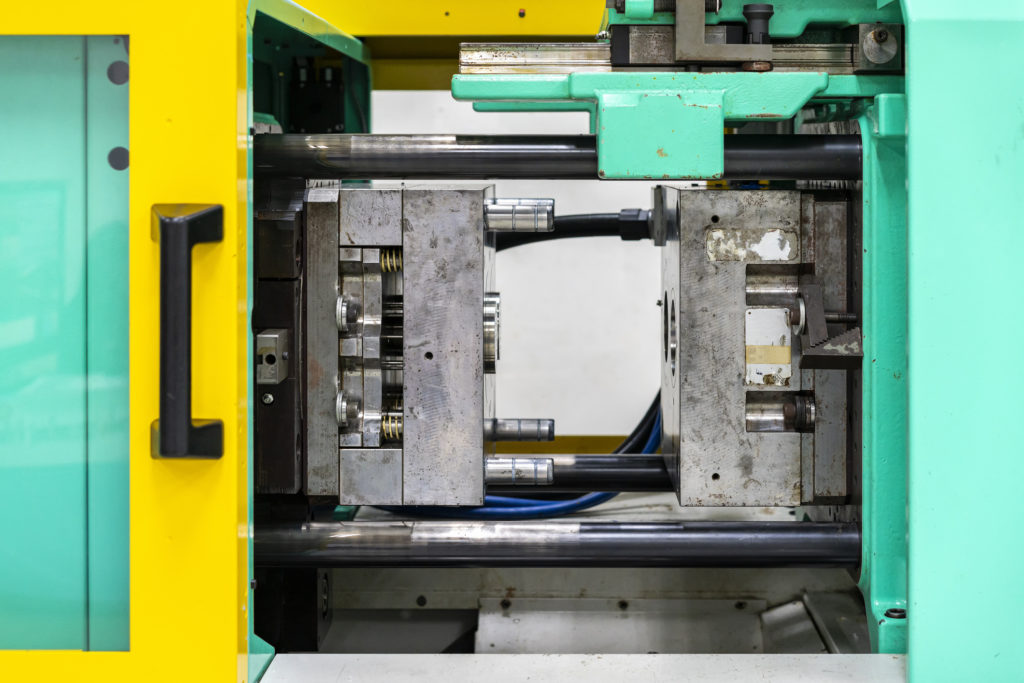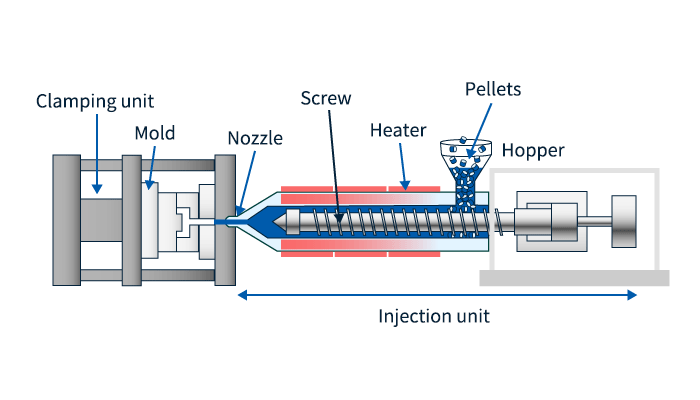Exactly How Plastic Injection Molding Drives Performance in Mass Production
Exactly How Plastic Injection Molding Drives Performance in Mass Production
Blog Article
Comprehending the Fundamentals of Plastic Shot Molding Procedures
Plastic shot molding serves as a foundation of contemporary production, providing a systematic method to creating complex components with precision. Exploring these important elements can expose exactly how even minor changes can lead to significant improvements in manufacturing end results, elevating inquiries concerning the possibility for advancement in this recognized process.
What Is Plastic Shot Molding?
Plastic shot molding is an extensively made use of manufacturing procedure that changes polycarbonate and thermosetting products right into accurate and complicated forms. This strategy is preferred for its capacity to create high quantities of the same components with outstanding accuracy, making it a crucial method in numerous industries, including auto, customer products, and clinical tools.
The process includes thawing the chosen plastic material and injecting it right into a mold under high pressure. The mold and mildew, made to the specs of the desired part, permits the molten plastic to take form as it cools and solidifies. When the product has actually solidified, the mold is opened up, and the ended up element is expelled.
Plastic shot molding offers numerous advantages, including lowered waste, uniformity in production, and the ability to incorporate elaborate styles that may be testing with various other producing techniques. In addition, it sustains a wide range of materials, each supplying one-of-a-kind homes that can be tailored for particular applications. As markets continue to innovate, plastic shot molding continues to be at the center, enabling the growth of innovative products that satisfy progressing consumer demands.
The Injection Molding Process
The shot molding process is an innovative technique that involves a number of vital phases to produce high-grade plastic parts. Plastic pellets are fed right into a heated barrel where they are melted into a thick fluid. This molten plastic is then injected under high stress into a precision-engineered mold, which shapes the material right into the preferred form.
As soon as the mold and mildew is filled, the plastic is allowed to cool and solidify, taking the shape of the mold and mildew tooth cavity. Cooling time is critical, as it influences the cycle time and the last residential or commercial properties of the molded part. After sufficient cooling, the mold and mildew opens, and the completed element is expelled making use of ejector pins.

Materials Used in Injection Molding
Various products can be used in the injection molding process, each offering special properties that deal with particular applications. The most typically used materials include thermoplastics, thermosetting plastics, and elastomers.

Thermosetting plastics, like epoxy and phenolic materials, go through a chemical adjustment throughout the healing process, causing a stiff, stringent structure. These products are perfect for applications calling for high heat resistance and architectural stability, usually used in electrical insulators and auto components.
Elastomers, including silicone and rubber-based products, offer adaptability and strength. Their unique homes make them suitable for applications that demand elasticity, such as seals and gaskets.
Additionally, specialty materials like bio-based plastics and composites are acquiring grip for their ecological benefits and enhanced performance features, broadening the scope of injection molding applications in various markets. Comprehending the buildings of these materials is important for picking the suitable type for particular jobs.
Advantages of Injection Molding
Injection molding stands out as a highly effective production procedure that uses many advantages for creating complex parts with precision. One of the most significant benefits is the capacity to develop detailed layouts that would certainly be impossible or challenging to achieve with various other techniques (Plastic Injection Molding). The procedure enables for in-depth functions and limited tolerances, guaranteeing premium components
Additionally, shot molding is understood for its rapid manufacturing capacities, making it an excellent selection for high-volume manufacturing. When the mold is created, content components can be produced swiftly, lowering lead times and increasing total productivity. This effectiveness not only decreases production costs image source but additionally supplies a competitive side out there.
The adaptability of materials utilized in shot molding further enhances its appeal. A wide variety of thermoplastics and thermosetting polymers can be employed, permitting makers to select products that finest fulfill their particular needs, consisting of warmth, stamina, and adaptability resistance.
Furthermore, the procedure minimizes waste, as excess material can usually be recycled and recycled. This sustainability facet adds to a reduced ecological influence, making shot molding a responsible manufacturing choice. In general, the benefits of shot molding make it a recommended technique for several industries.
Elements Impacting Product High Quality
While many variables can affect product top quality in shot molding, understanding these elements is essential for attaining optimum outcomes. Trick aspects include material selection, processing parameters, and mold and mildew style.
Product choice plays a crucial function, as various polymers display special homes that impact flowability, stamina, go to this web-site and thermal stability. Inadequate material selection can bring about defects such as warping or insufficient filling.
Processing specifications, consisting of cycle, stress, and temperature level time, need to be thoroughly regulated. Variants in these settings can cause variances in component dimensions and surface coating. For example, excessively high temperatures may create deterioration of the polymer, while insufficient pressure can cause brief shots.
Mold and mildew style is equally vital, as it figures out the circulation of the molten plastic and the cooling procedure. Badly designed mold and mildews may bring about unequal air conditioning rates, resulting in dimensional mistakes and residual stress and anxieties.

Conclusion
To conclude, plastic injection molding works as a vital production procedure that makes it possible for the reliable manufacturing of top quality components. Proficiency of the injection molding procedure, including the understanding of materials and the influence of different elements on product high quality, is crucial for attaining optimum outcomes. The benefits of this technique, such as cost-effectiveness and style versatility, further underscore its significance across numerous sectors, solidifying its status as a preferred choice for high-volume manufacturing.
Plastic injection molding serves as a keystone of modern-day manufacturing, providing a systematic method to creating complex parts with accuracy.Plastic injection molding supplies numerous advantages, consisting of minimized waste, consistency in manufacturing, and the ability to incorporate detailed styles that may be testing with other making approaches (Plastic Injection Molding). As sectors continue to introduce, plastic injection molding continues to be at the center, enabling the growth of advanced products that meet evolving customer needs
The injection molding procedure is a sophisticated method that involves a number of crucial phases to produce high-quality plastic parts.In conclusion, plastic shot molding offers as an important manufacturing process that makes it possible for the efficient manufacturing of high-quality elements.
Report this page